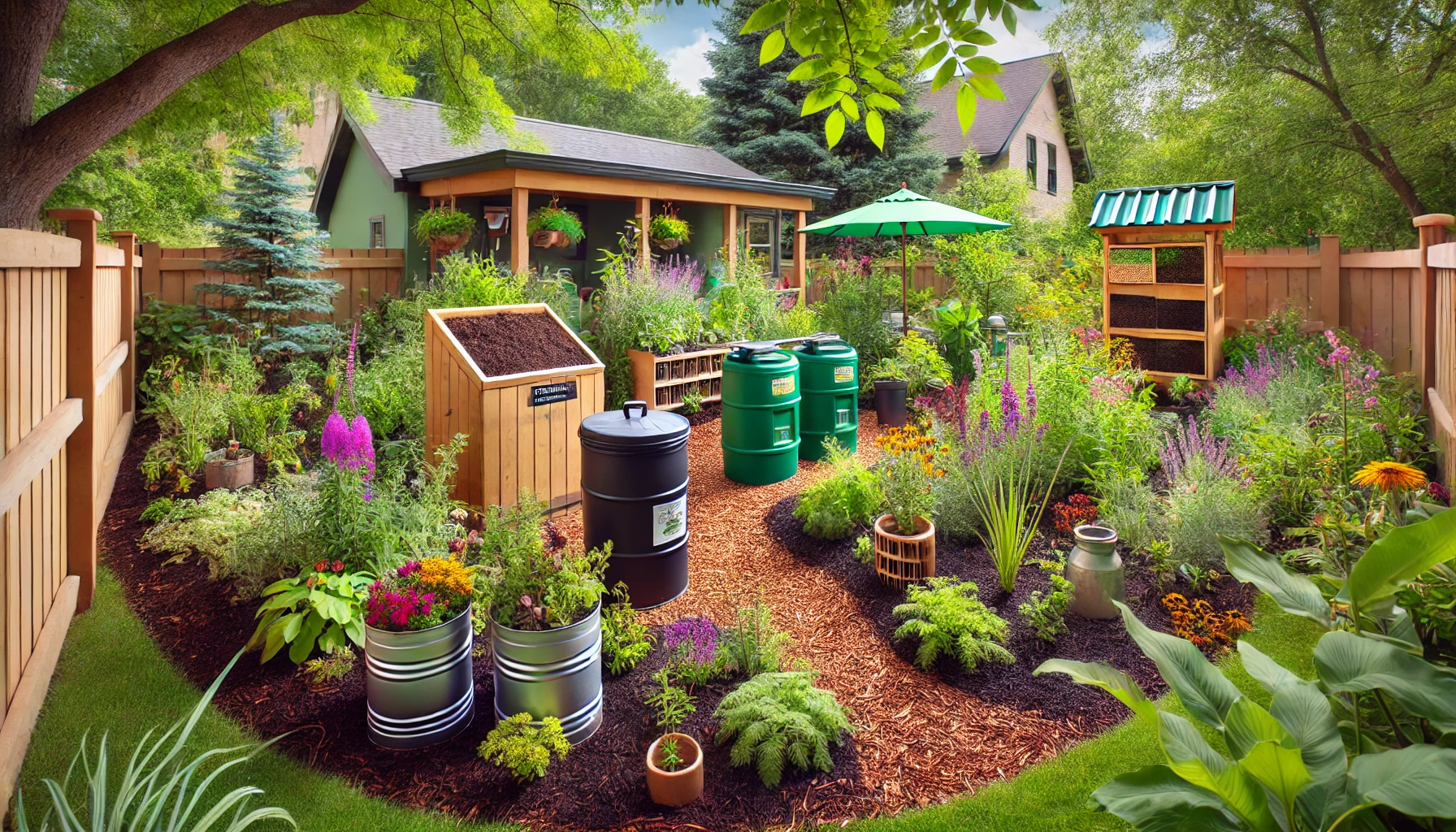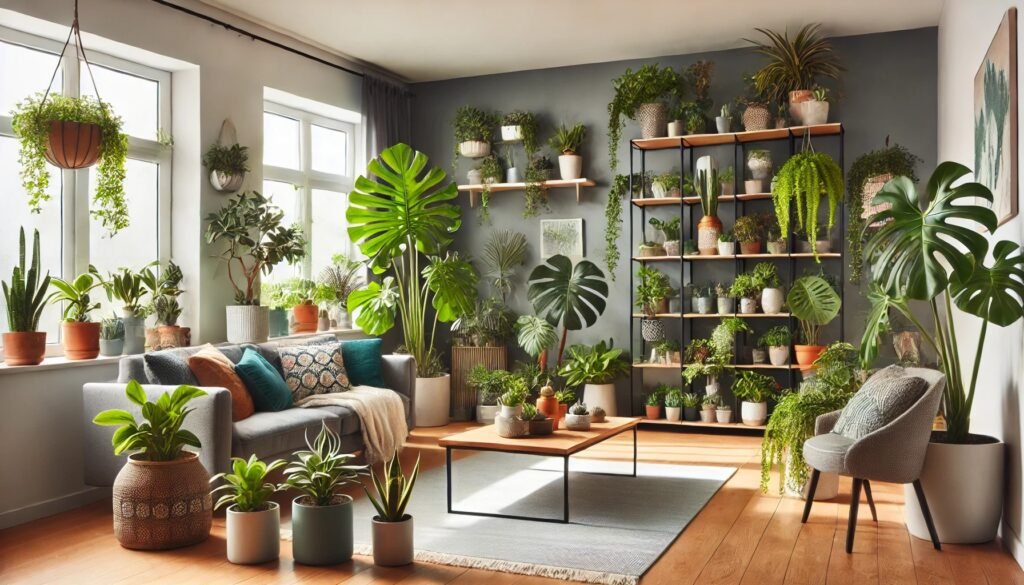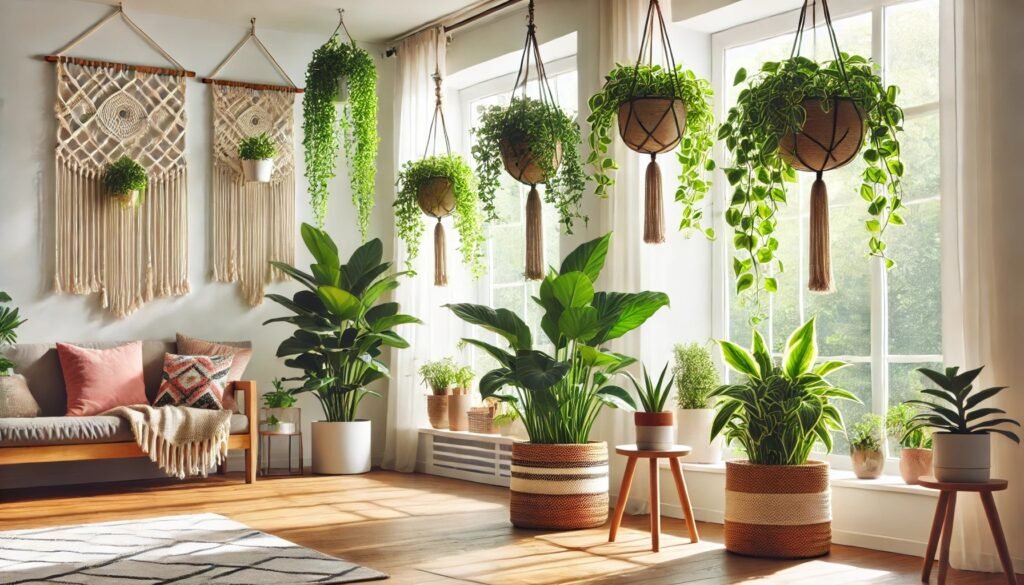
Creating an eco-friendly garden is not only beneficial for the environment, but it can also be a fulfilling and enjoyable experience. Sustainable gardening practices help reduce waste, conserve resources, and support local ecosystems. If you’re looking to green your thumb and make a positive impact, here’s everything you need to know about sustainable gardening.
Embrace Composting
The Benefits of Composting
Composting is one of the most effective ways to reduce waste and enrich your garden soil. By recycling kitchen scraps, garden waste, and other organic materials, you create a nutrient-rich compost that improves soil health and reduces the need for chemical fertilizers.
How to Compost
Start by choosing a compost bin or pile location in your garden. Add a mix of green materials (like vegetable scraps, coffee grounds, and grass clippings) and brown materials (like leaves, straw, and cardboard). Turn the compost regularly to aerate it and speed up decomposition. Over time, you’ll have a rich, dark compost to use in your garden beds.
Use Native Plants
Why Native Plants?
Native plants are adapted to your local climate and soil conditions, making them easier to grow and maintain. They require less water, are more resistant to local pests and diseases, and provide essential habitat for local wildlife.
Selecting Native Plants
Research plants that are native to your region. Consider their growth habits, bloom times, and environmental needs. Incorporate a variety of native species to create a diverse and resilient garden that supports local ecosystems.
Conserve Water
Efficient Watering Techniques
Water conservation is crucial for sustainable gardening. Use efficient watering techniques like drip irrigation or soaker hoses to deliver water directly to the plant roots, reducing evaporation and runoff. Water your garden early in the morning or late in the evening to minimize water loss.
Rainwater Harvesting
Collecting rainwater is another excellent way to conserve water. Install rain barrels under downspouts to capture runoff from your roof. Use this harvested rainwater to irrigate your garden during dry periods, reducing your reliance on municipal water supplies.
Natural Pest Control
Avoid Harmful Pesticides
Chemical pesticides can harm beneficial insects, contaminate soil and water, and pose health risks to humans and animals. Instead, use natural pest control methods to manage garden pests.
Encourage Beneficial Insects
Attract beneficial insects like ladybugs, lacewings, and predatory wasps by planting a variety of flowers and herbs. These insects prey on common garden pests and help keep their populations in check. You can also introduce beneficial insects to your garden by purchasing them from garden centers.
Homemade Remedies
Create homemade pest control remedies using natural ingredients. For example, a mixture of water, soap, and neem oil can deter aphids, while garlic and chili pepper sprays can repel a variety of pests. Regularly inspect your plants and treat any infestations promptly to prevent them from spreading.
Create a Pollinator-Friendly Garden
Why Pollinators Matter
Pollinators like bees, butterflies, and hummingbirds play a crucial role in the health of our ecosystems by pollinating plants and ensuring the production of fruits and seeds. Creating a pollinator-friendly garden supports these important creatures and enhances biodiversity.
Planting for Pollinators
Choose a variety of flowering plants that bloom at different times throughout the growing season. This ensures a continuous food supply for pollinators. Native plants are particularly beneficial, as they provide the most suitable habitat and food sources for local pollinator species.
Provide Habitat
In addition to planting flowers, create habitat for pollinators by leaving some areas of your garden wild. Provide nesting sites for bees, such as bare soil, wood piles, and bee houses. Avoid using pesticides, as they can be harmful to pollinators.
Additional Sustainable Practices
Mulching
Mulching is a simple yet effective way to improve soil health, conserve moisture, and reduce weeds. Use organic mulch like wood chips, straw, or leaves to cover the soil around your plants. This not only helps retain moisture but also adds organic matter to the soil as it decomposes.
Reduce Lawn Areas
Lawns require a lot of water, fertilizer, and maintenance. Consider reducing the size of your lawn and replacing it with native plants, ground covers, or edible landscapes. This not only reduces resource use but also creates more habitat for wildlife.
Reuse and Recycle
Incorporate recycled materials into your garden design. Use reclaimed wood for raised beds, repurpose containers for planting, and recycle old tools and equipment. This reduces waste and gives a second life to materials that might otherwise end up in a landfill.
Sustainable Garden Design
When planning your garden, think about its long-term sustainability. Group plants with similar water and sunlight needs together to reduce resource use. Design with biodiversity in mind, incorporating a variety of plants to support different types of wildlife. Consider the use of permaculture principles, which focus on creating self-sustaining ecosystems.
Final Thoughts
Creating an eco-friendly garden is a rewarding journey that benefits both you and the environment. By embracing sustainable gardening practices like composting, using native plants, conserving water, avoiding harmful pesticides, and supporting pollinators, you can create a thriving garden that is in harmony with nature. Remember, every small step towards sustainability makes a big difference. Happy gardening!
Stay connected with the world of plants! Subscribe to Phylofy for expert gardening tips, DIY projects, and eco-friendly inspiration. Join our community and nurture your love for nature. Don’t miss exclusive content and updates. Subscribe now!



